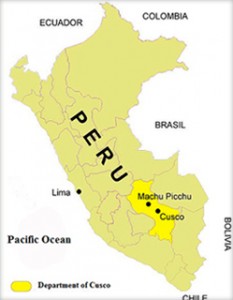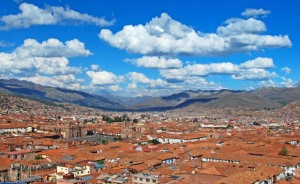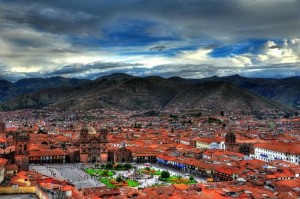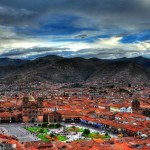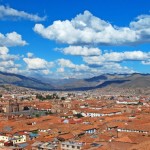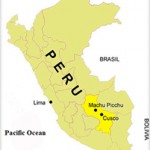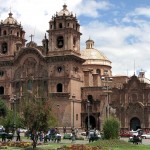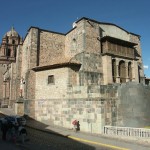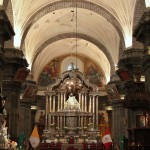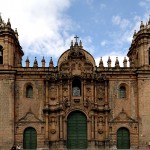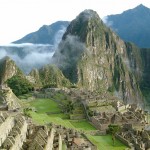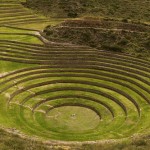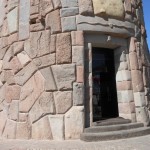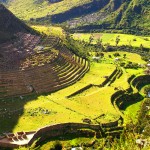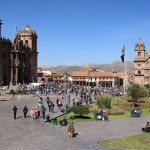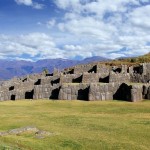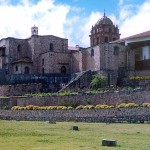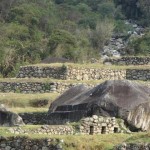Written by Soudip
July 29th 2015Other Places
You Are Here
Home > Peru > Chavin de Huantar Historical Facts and PicturesCity of Cuzco Historical Facts and Pictures
Cuzco, also spelled as Cusco, is the Peruvian capital city of the Cusco Province as well as the Cusco Region. It is located in southeastern Peru at an altitude of 3,400 m above the sea level. During the 15th century, it was remodeled under the reign of Inca Pachacutec and was recognized as the capital of the Inca Empire that covered most of the Andes range. This imperial city was an urban center with perfectly organized and distributed administrative and religious functions.
History
Prior to the Inca rule, the ancient city was occupied by the Killke people during 900-1200 AD. The Saksaywaman fortress complex, constructed in 1100 AD, is a testament to the influence of the Killke culture in the region. After the onset of Inca rule in the 13th century, the city became famous for its architectural and urban achievements of cultural, economic, and political settlements. Archeological evidence has suggested that the city was developed by a definite plan. Eventually in 1533, the Spaniards with their superior military strength invaded Cuzco and conquered the city.
Important Landmarks and Sights
Ruins of buildings
Remains of the Saksaywaman complex with a 2,700-square foot ancient temple, Inca palaces, the Temple of the Sun (Qurikancha), and the Temple of the Virgins of the Sun still exist. Another famous Inca site, Machu Picchu, which is considered Pachacutec’s winter home, can be reached by train or on foot by Camino Inca (Inca Trail). Some of the less-visited remains are Vitcos, Moray, Patallaqta, Willkaraqay, Inka Wasi, and Willkapampa.
Cuzco Cathedral
Iglesia del Triunfo, the first cathedral constructed in Cuzco in 1539, has now become a chapel of the main cathedral that was constructed during 1560-1664. Built of stone, the great cathedral features Baroque, late Gothic, and Plateresque interiors. It is famous for a painting that depicts the Last Supper.
Plaza de Armas
During the Inca era, the sight of the plaza was called the “Square of the Warrior.” The place has witnessed several notable events associated with the city’s history including the declaration by Francisco Pizzaro and the death of the indigenous leader Tupac Amaru II.
Church of la Compania de Jesus
The construction of this church was initiated in 1576 over a chapel concealed underneath the surface. While its façade is made of stone, the main altar is carved in wood and decorated with gold leaf.
Convent of Santo Domingo
Almost the entire Qurikancha temple was destroyed by the Spanish invaders, who used the temple structure as the foundation of the Convent. Built in Renaissance style, the church with its baroque tower stands taller than most of the other buildings in Cuzco.
- City of Cuzco Pictures
- City of Cuzco
- Cuzco Map
- Church of la Compania de Jesus
- Convent of Santo Domingo
- Cuzco Cathedral Inside
- Cuzco Cathedral
- Machu Picchu
- Moray
- Pachacutec’s Winter Home
- Patallacta
- Plaza de Armas
- Saksaywaman
- Temple of the Sun
- Vitcos
Convent of la Merced
Founded in 1536, the original complex was devastated by an earthquake in 1650. It was later reconstructed in 1675, and now it serves as a popular tourist attraction.
Category
PeruWritten by Soudip
July 29th 2015









